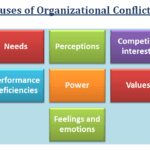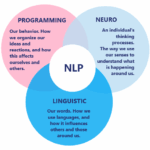Succession planning is a critical strategy for ensuring the continued success and leadership stability of an organization. It focuses on identifying and developing qualified individuals to take on key leadership positions when they become vacant, either due to retirement, promotion, or unexpected events. The goal is to ensure that the organization has the right leadership in place at the right time, preventing disruptions in operations and maintaining a smooth transition.
Key Elements of Succession Planning
-
Continuity in Leadership:
Succession planning is designed to ensure that qualified individuals are ready to step into leadership roles when needed. This is particularly important for senior management positions, where leadership continuity is crucial for the company’s ongoing strategy and operations. The aim is to avoid gaps in leadership that could lead to instability, loss of direction, or reduced performance. -
Identification of Key Positions:
Most companies focus their succession planning efforts on key positions, often at the executive or senior management level. These positions are typically seen as critical to the company’s success, and it is essential to have qualified successors identified in advance. Positions might include department heads, vice presidents, or even C-suite executives, depending on the organization’s structure. -
Talent Development:
Succession planning is not just about identifying potential future leaders; it also involves developing talent within the organization. This means providing employees with opportunities for skill development, leadership training, and exposure to different aspects of the business. By investing in the growth of high-potential employees, companies create a pipeline of talent ready to take on leadership roles when the time comes. -
Regular Review and Updates:
Succession planning is a dynamic process. Organizations should regularly review and update their succession plans to reflect changes in business needs, market conditions, and the performance of potential candidates. Many companies, such as Brose or Daimler, conduct annual meetings with local managers to assess current and future leadership needs, making adjustments as required. -
Integration with Career and Advancement Planning:
Succession planning is closely tied to career development and advancement planning. Employees who are identified as future leaders should be given clear career development paths to prepare them for higher-level positions. This includes offering leadership training, mentoring, and job rotations to give them the skills and experience needed for a smooth transition into leadership roles.
Benefits of Succession Planning
-
Leadership Stability: Ensures that the organization is never without a qualified leader, helping to maintain stability during times of transition.
-
Risk Mitigation: Reduces the risk of being unprepared for leadership changes, which could otherwise lead to disruptions in business operations.
-
Talent Retention: Employees are more likely to stay with a company that offers clear career growth opportunities and a path for advancement.
-
Organizational Continuity: Helps maintain consistency in company culture, values, and strategic goals, even as leadership changes occur.
Practical Steps in Succession Planning
-
Identify Key Positions: Start by identifying the positions that are critical to the organization’s success.
-
Assess Internal Talent: Review the current employees who have the potential to step into these roles.
-
Develop a Talent Pool: Create a pipeline of future leaders by providing development opportunities and mentoring for high-potential employees.
-
Set Clear Benchmarks: Establish specific qualifications, skills, and experiences required for leadership roles to ensure potential successors are prepared.
-
Monitor and Review: Regularly revisit the succession plan to ensure it aligns with the company’s evolving needs and goals.






![15 Employee Offboarding Templates That Save Hours of HR Time [Free Downloads] 15 Employee Offboarding Templates That Save Hours of HR Time [Free Downloads]](https://i1.wp.com/www.hrcloud.com/hubfs/Header.png?w=150&resize=150,100&ssl=1)
